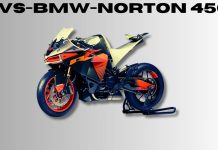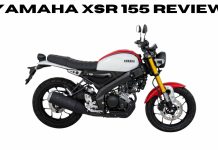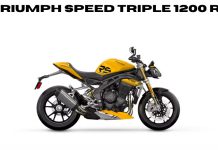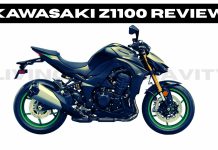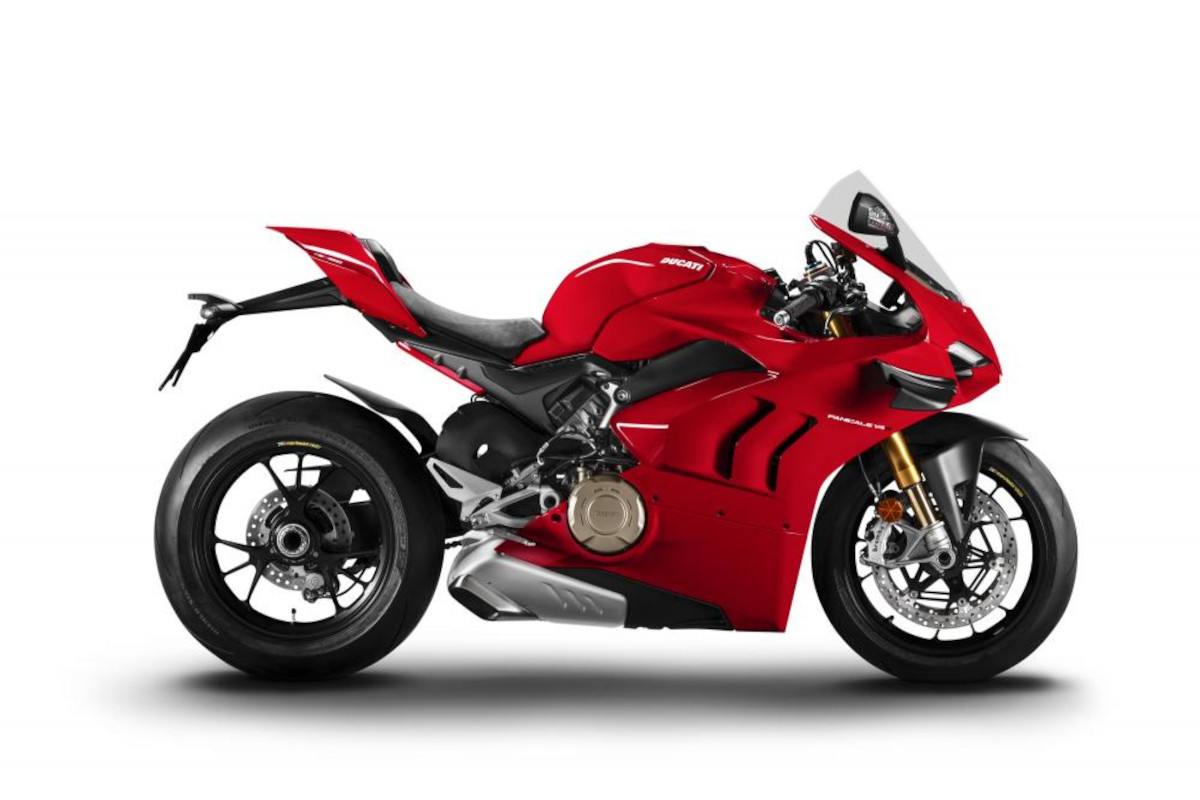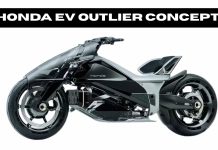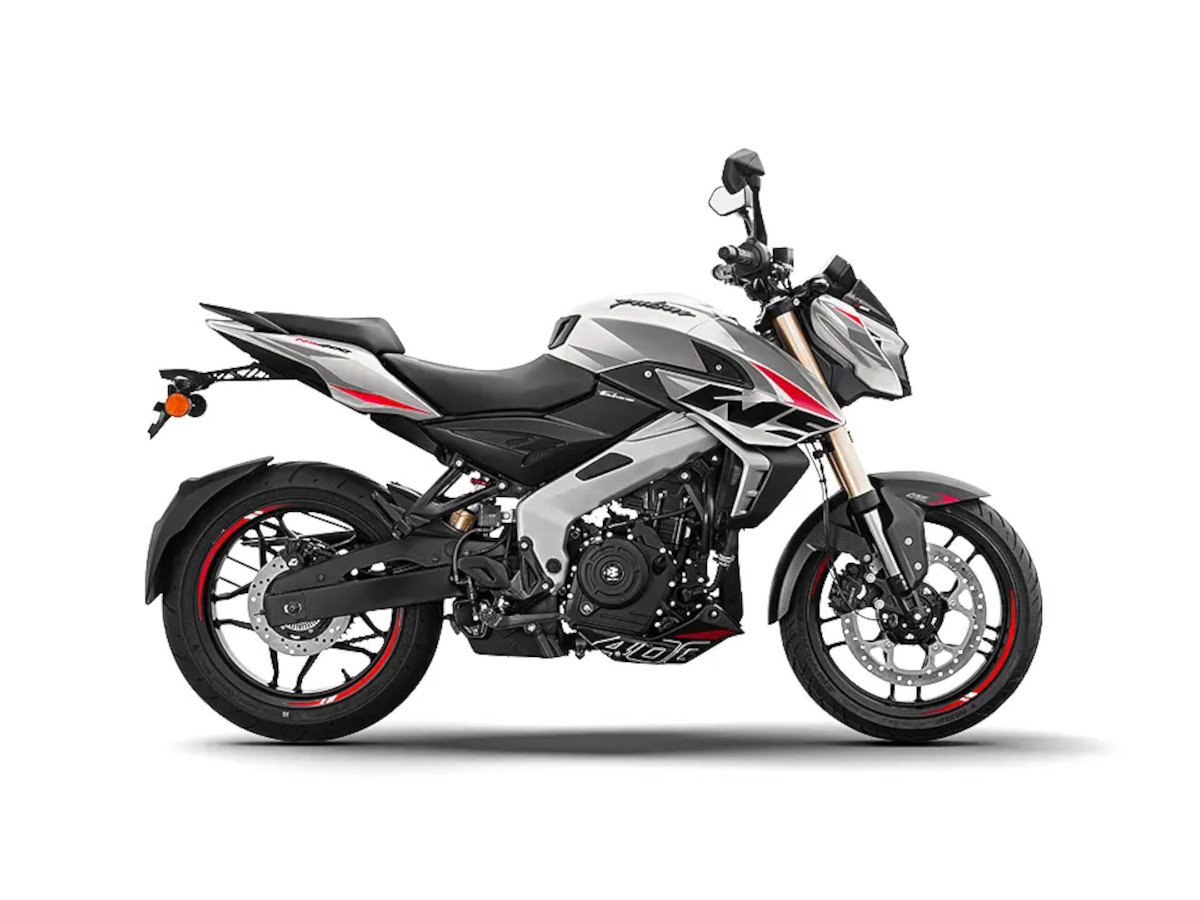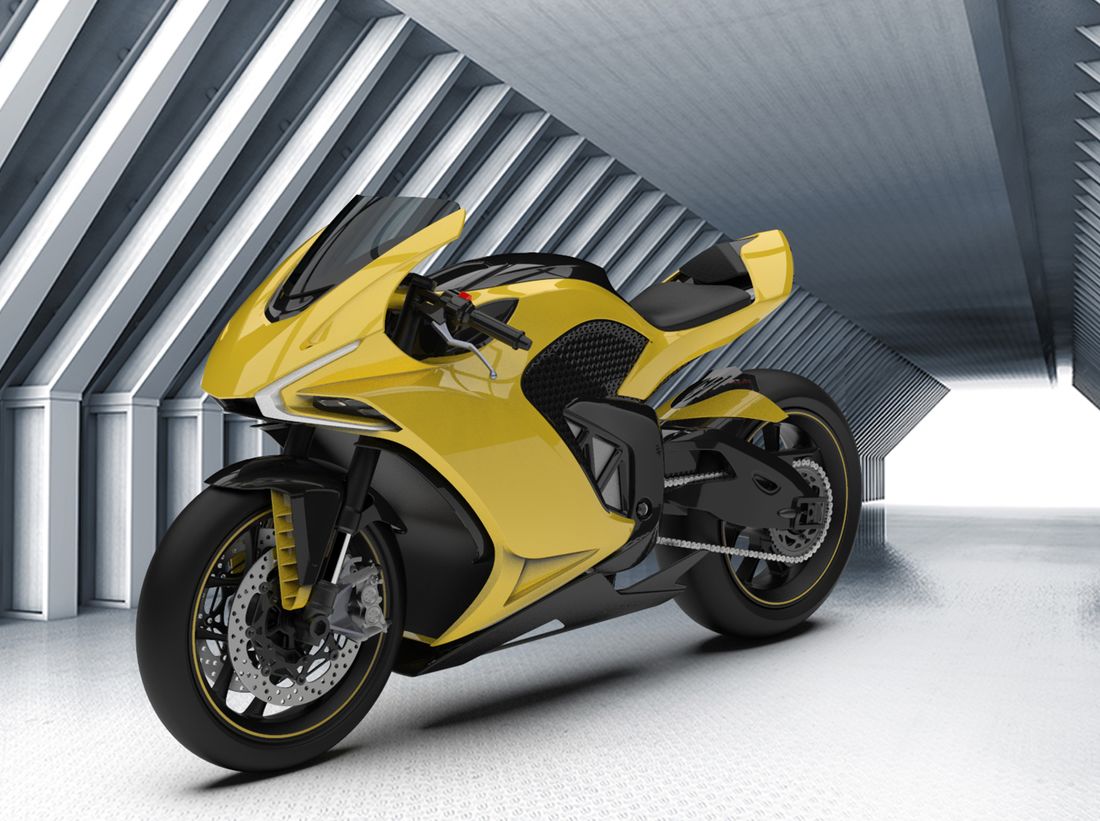Executive Summary
The 2025 Bajaj Pulsar NS400Z is poised to launch in India with a suite of significant performance and feature enhancements. These updates include a notable power increase for its 373cc liquid-cooled engine, now delivering 42.4bhp, the integration of a bi-directional quickshifter for seamless gear changes, the adoption of wider and stickier Apollo Alpha H1 tyres, and improved braking performance courtesy of sintered pads.1 These comprehensive revisions are strategically implemented to reinforce the NS400Z’s standing as a compelling value-for-money proposition within India’s highly competitive 300-450cc performance motorcycle segment.4
The NS400Z skillfully combines a proven engine platform, now more potent than its predecessor, with modern rider aids such as the quickshifter and multiple ride modes. Crucial safety enhancements, including the upgraded tyres and brakes, further elevate its appeal. Its aggressive pricing strategy, with an expected ex-showroom price range of Rs. 1.90 lakh to Rs. 1.92 lakh, ensures it remains one of the most affordable 400cc class motorcycles available, significantly undercutting many direct and indirect rivals.1 This makes it an exceptionally attractive option for performance-oriented buyers operating within a budget.
A key observation is Bajaj’s swift introduction of substantial mechanical enhancements within a year of the original launch. This rapid iteration underscores the manufacturer’s remarkable responsiveness to consumer and media feedback, particularly considering that handling and braking were points of discussion for the initial model.12
This proactive stance, far from a mere routine model year update, is a clear demonstration of Bajaj’s commitment to maintaining a sharp competitive edge. Such agility in product development could, in turn, set a new standard in the Indian motorcycle market, potentially compelling competitors to accelerate their own product refresh cycles. This consistent delivery of superior value and feature-rich products further solidifies the Pulsar brand’s legacy of performance and accessibility.
Introduction: The Pulsar’s Evolution into the 400cc Segment
The Bajaj Pulsar brand has profoundly shaped the Indian motorcycle market over the past two decades, consistently serving as a benchmark for sporty dynamics and aspirational styling within accessible price brackets.3 It has evolved from a commuter-plus offering to a formidable performance line, continually pushing boundaries within its respective segments and establishing a loyal customer base. The brand’s journey reflects a deep understanding of the Indian rider’s desire for performance without compromising on affordability.
The Pulsar NS400Z stands as the “biggest and most powerful Pulsar ever made,” strategically leveraging the well-regarded 373cc engine platform.7 This engine is directly derived from the Bajaj Dominar 400, which itself traces its lineage back to the first-generation KTM 390 Duke.3 The rationale behind the 2025 updates is multifaceted: beyond mere cosmetic changes, they are designed to significantly enhance core performance, safety, and the overall rider experience, directly addressing initial market feedback and fortifying its competitive stance in the burgeoning 400cc segment.1
The NS400Z’s foundation relies heavily on existing Bajaj platforms, utilizing the Dominar 400’s engine and a perimeter frame akin to the NS200.5 This approach, where components are shared across the product family, translates into reduced maintenance costs for owners.4 More critically, this strategy substantially decreases Bajaj’s research and development expenditures, allowing the company to offer a powerful 400cc motorcycle at an “extremely attractive” price point.10 Furthermore, the ability to roll out a significant 2025 update within a year of the original launch is largely attributable to this modular and shared-platform development strategy.
This strategic platform sharing allows Bajaj to act as a market disruptor in higher segments by offering aggressive pricing, thereby compelling competitors who invest in ground-up platform development to reconsider their strategies. This exemplifies a business model that prioritizes maximizing value from established, reliable architectures rather than constant, expensive reinvention. This also translates into tangible benefits for the end consumer, such as potentially lower spare parts costs and a more familiar, widespread service network, enhancing the overall ownership experience.

Powertrain Prowess: Engine and Drivetrain Upgrades
For the 2025 model year, the Bajaj Pulsar NS400Z’s 373cc liquid-cooled engine receives a significant boost, now producing 42.4bhp, a notable increase from the previous 39.5bhp.1 This enhancement is complemented by an expected peak torque of 37Nm.1 This revised power output brings the NS400Z’s performance closer to the second-generation KTM 390 Duke and positions it as more powerful than its platform sibling, the Bajaj Dominar 400 (39.4bhp/40PS, 35Nm), and the Triumph Speed 400 (40PS, 37.5Nm).17 The engine itself is a sophisticated 4-valve, DOHC unit featuring DLC (Diamond-Like Carbon) coated finger followers 23, known for its “crisp tuning of throttle and strong mid-range” 4, which collectively delivers “thrilling performance”.4
A pivotal feature addition for the 2025 NS400Z is the inclusion of a bi-directional quickshifter, which facilitates seamless, clutch-less upshifts and downshifts.1 This advanced component significantly enhances the motorcycle’s “performance-oriented” character, contributing to a more engaging and convenient riding experience, particularly in spirited riding or congested urban environments.3 This feature marks a substantial upgrade, as it was absent from the initial NS400Z offering.23
The engine powering the NS400Z is directly adopted from the Dominar 400, and its fundamental design can be traced back to the first-generation KTM 390 Duke.3 This established lineage implies a proven track record of reliability and robust performance, characterized by a “rev happy, easy going motor that packs plenty of performance”.14 While the engine platform is celebrated for its performance, earlier iterations of the NS400Z were noted for some vibrations at higher revs.14 The 2025 power bump may influence these characteristics, though the core engine’s inherent traits are expected to persist. Furthermore, the engine has been updated to comply with the latest BS6 P2 OBD2B emission standards, ensuring environmental compliance.13
The power increase to 42.4bhp is a critical development. This output positions the NS400Z very close to the 47.34bhp of the current KTM 390 Duke while notably surpassing the Dominar 400 and Triumph Speed 400.1 This achievement is particularly significant given the NS400Z’s substantially lower price point. The strategic inclusion of a bi-directional quickshifter, a premium feature typically reserved for more expensive motorcycles, further accentuates its performance credentials and enhances rider convenience.1
This demonstrates Bajaj’s clear intent to not merely compete on price but to actively diminish the performance disparity with higher-priced rivals, simultaneously integrating advanced features. This aggressive approach has the potential to redefine the “value” proposition within the 300-450cc segment, making what were once premium features more accessible to a broader consumer base. This could, in turn, accelerate the widespread adoption of such technologies across the Indian motorcycle market. Ultimately, it solidifies the NS400Z’s reputation as a “performance on a tight budget” leader, challenging established norms and pushing the boundaries of affordability in the performance category.6
The 2025 NS400Z boasts a claimed mileage of 30-34 kmpl.5 Real-world fuel efficiency tests indicate approximately 27.52 kmpl in city riding conditions and 29.62 kmpl on highways 14, figures considered “pretty awesome” for a motorcycle of its displacement and performance capabilities.25 Coupled with a 12-liter fuel tank capacity 4, this efficiency translates to a respectable riding range, making the NS400Z practical for both daily commutes and longer weekend touring excursions.8
Dynamic Enhancements: Chassis, Tyres, and Braking System
The 2025 Pulsar NS400Z receives a crucial upgrade to its contact patches with the introduction of wider, stickier Apollo Alpha H1 tyres.1 The rear tyre is upsized from a 140-section MRF Revz to a more substantial 150-section unit.2 This wider profile is expected to deliver “better grip in dry as well as wet riding conditions” and noticeably enhance the bike’s “visual stance”.13 The front continues to use a 110/70-R17 tyre.1 The Apollo Alpha H1s are specifically highlighted as “stickier” and possessing a “more aggressive profile” compared to the outgoing MRF units, promising a tangible improvement in dynamic performance.2
In a significant safety and performance upgrade, Bajaj is replacing the organic brake pads on the Pulsar NS400Z with sintered brake pads.1 This material change is anticipated to “improve the initial bite and feedback, but also reduce brake fade,” particularly under sustained hard braking.2 This enhancement directly addresses earlier discussions regarding the motorcycle’s braking performance, ensuring more confident and effective stopping power.3 The Grimeca caliper system remains consistent with the previous model.5
The NS400Z is underpinned by a robust perimeter frame, a design known for its rigidity and suitability for performance applications, being “tuned for a quick performance and agile handling”.4 Suspension duties are handled by 43mm USD (Upside Down) front forks paired with a monoshock featuring Nitrox and 6-step adjustability at the rear.4 This suspension setup contributes to a “calm and poised ride quality,” providing a balance between comfort and sportiness.4
For enhanced rider safety and control, the NS400Z comes standard with dual-channel ABS (Anti-lock Braking System).4 Complementing this is switchable traction control, a feature that can be disengaged in Sport and Off-road modes to allow for more aggressive riding or off-road maneuvers.2 These electronic aids are crucial for maintaining stability and preventing wheel lock-ups or excessive wheelspin, especially in “tricky parts of the ride,” allowing riders to tailor the bike’s behavior to prevailing conditions and personal preferences.4
The initial NS400Z garnered some discussion regarding its braking feel and overall handling, with some reviewers noting that it “doesn’t feel natural or communicative” and that the rear tyre was “small for this level of power”.12 The 2025 updates directly target these specific areas of concern. The adoption of wider, stickier Apollo Alpha H1 tyres is designed to improve grip, stability, and visual presence.13 Concurrently, the switch to sintered brake pads aims to deliver a “stronger bite” and mitigate brake fade.13
It demonstrates a strategic move by Bajaj to not only enhance raw performance but also to refine the overall riding experience by addressing previously identified shortcomings. By proactively addressing these critical feedback points, Bajaj significantly bolsters the perceived quality and rider confidence in the NS400Z. This transition elevates the motorcycle beyond merely a “value-for-money” proposition to a more “well-engineered product”.13 This refinement is likely to appeal to a broader demographic of riders who prioritize comprehensive dynamic capabilities and a refined riding experience alongside affordability. It suggests Bajaj’s ambition to offer a more premium feel within its budget-friendly segment.
Feature Set: Technology and Rider Experience
The 2025 NS400Z features a “Bonded glass with colour LCD display,” which functions as a “fully digital LCD console with Bluetooth connectivity”.9 This comprehensive cluster provides a wealth of information and functionality. Key features include integrated navigation control for turn-by-turn directions, comprehensive music control (allowing volume adjustment, track skipping, and play/pause functionality), the ability to accept or reject calls directly from the handlebar, and notifications for missed calls and SMS messages. Additionally, it offers a lap timer, brightness control, and displays mobile battery and network strength status.5 While some initial reviews of the previous model considered the LCD console “barebone” or potentially less appealing to “feature lovers,” it is acknowledged that it “does the job” effectively, providing essential information and connectivity.4
A key technological highlight is the inclusion of four rider-selectable ECU ride modes: Road, Rain, Sport, and Off-road.2 These modes are designed to dynamically adjust various parameters such as engine power delivery, throttle response, and the intervention levels of ABS and Traction Control. This allows riders to optimize the motorcycle’s behavior to suit diverse riding conditions, from urban commuting to spirited track days or challenging off-road trails, enhancing both safety and performance.5
Beyond the digital console and ride modes, the NS400Z boasts a full suite of LED lighting, including a “Bi functional Sealed LED projector with ‘Z’ signature DRLs” for the headlamp, an LED tail lamp, and LED blinkers.2 This not only enhances visibility but also contributes to a modern aesthetic. Adjustable levers allow riders to fine-tune ergonomics for a more comfortable and personalized riding position.23 For added convenience, a USB socket charger is integrated, enabling on-the-go device charging.23 A hazard lamp switch is also included for safety.23
The NS400Z is consistently marketed and perceived as an “affordable” 400cc motorcycle.5 Yet, it comes equipped with a suite of advanced features that were, until recently, predominantly found on significantly more expensive motorcycles. These include ride-by-wire throttle, four distinct ride modes, dual-channel ABS, switchable traction control, and a sophisticated digital instrument console with Bluetooth connectivity and turn-by-turn navigation.5 The addition of a bi-directional quickshifter further pushes the boundaries of what is expected at this price point, as this feature is often a hallmark of premium performance bikes.1
Bajaj’s strategy is effectively making these premium motorcycle features accessible to a much wider demographic in the price-sensitive Indian market. This approach not only significantly enhances the NS400Z’s appeal but also elevates consumer expectations for what a “budget” performance bike should offer. This, in turn, could compel other manufacturers to integrate similar advanced features into their mid-range offerings to remain competitive. This strategy aligns perfectly with the “value for money” proposition, which has always been a core tenet of the Pulsar brand’s success.
Market Positioning and Competitive Landscape
The 2025 Bajaj Pulsar NS400Z is anticipated to be priced competitively, ranging between Rs. 1.90 lakh to Rs. 1.92 lakh (ex-showroom).1 This represents a modest price increase of approximately Rs. 7,000-8,000 or around Rs. 10,000 compared to the previous model’s ex-showroom price of Rs. 1.81-1.85 lakh.1 Despite this slight increase, the NS400Z is consistently lauded as “superbly priced for the segment” and remains “one of the most affordable bikes in the 400cc category”.4 On-road prices, which include RTO and insurance charges, vary significantly by city: Delhi (Rs. 2.18-2.21 lakh), Mumbai (Rs. 2.31-2.32 lakh), Pune (Rs. 2.23-2.35 lakh), Bangalore (Rs. 2.44 lakh), Chennai (Rs. 2.32 lakh), Kolkata (Rs. 2.26 lakh), Ahmedabad (Rs. 2.23 lakh), Hyderabad (Rs. 2.36 lakh), and Chandigarh (Rs. 2.25 lakh).2
The 2025 NS400Z’s ex-showroom pricing is a strategic masterstroke. It is not only significantly lower than most 300-450cc rivals but also undercuts bikes with demonstrably lower power outputs. Crucially, it offers comparable or superior power to many of these, augmented by premium features like the quickshifter. This is not just competitive pricing; it is an aggressive, calculated strategy to seize market share by delivering disproportionate value.
This disruptive pricing and feature strategy is poised to compel competitors to either revise their pricing downwards, significantly enhance their feature sets, or carve out more distinct niche differentiators (e.g., focusing on brand prestige, specific riding dynamics, or advanced electronics). Ultimately, this benefits consumers in the segment, as they will receive more advanced and powerful motorcycles for their investment, thereby elevating the overall value proposition across the market. Bajaj is effectively expanding the market for performance bikes by making them more attainable to a wider audience.
The Pulsar NS400Z consistently emerges as an exceptional “value for money” proposition.3 Its aggressive pricing, coupled with the significant performance and feature upgrades for 2025, positions it as a disruptive force in its segment. It effectively delivers near-premium performance and a comprehensive feature set at a price point typically associated with the commuter segment, making it an undeniable choice for budget-conscious performance enthusiasts.
Table 1: 2025 Bajaj Pulsar NS400Z vs. Key Rivals – Comparative Specifications & Pricing
| Model | Engine Displacement (cc) | Max Power (bhp/PS) | Max Torque (Nm) | Quickshifter | Sintered Brake Pads | Rear Tyre Section | Ride Modes | Traction Control | ABS | Expected/Current Ex-showroom Price (INR Lakh) |
| 2025 Bajaj Pulsar NS400Z | 373 | 42.4 bhp | 37 | Yes | Yes | 150-section | Yes (4) | Yes | Dual Channel | 1.90-1.92 |
| KTM 390 Duke | 398.63 | 47.34 bhp | 39 | N/A | N/A | N/A | Yes (2) | Yes | Dual Channel | 2.95-2.97 |
| Triumph Speed 400 | 398.15 | 40 PS | 37.5 | No | No | 150-section | No | Yes | Dual Channel | 2.46 |
| TVS Apache RTR 310 | 312.12 | 35.6 PS | 28.7 | Optional | No | 150-section | Yes (5) | Yes | Dual Channel | 2.50-2.72 |
| Bajaj Dominar 400 | 373.3 | 40 PS | 35 | No | No | 150-section | No | No | Dual Channel | 2.33-2.49 |
| Royal Enfield Guerrilla 450 | 452 | 40.02 PS | 40 | No | No | 160-section | Yes (2) | No | Dual Channel | 2.39-2.54 |
| Hero Mavrick 440 | 440 | 27.36 PS | 36 | No | No | 150-section | No | No | Dual Channel | 1.99-2.24 |
| Husqvarna Svartpilen 401 | 398.63 | 46 PS | 39 | No | Yes | 150-section | No | No | Dual Channel | 2.92-2.97 |
| BMW G 310 R | 313 | 34 PS | 28 | No | No | N/A | No | No | Dual Channel | 2.85-2.90 |
Note: N/A indicates information not explicitly specified in the provided source material.
Ownership Experience: Practicality, Maintenance, and Warranty
Bajaj Auto Limited demonstrates significant confidence in the 2025 Pulsar NS400Z’s reliability and durability by offering a comprehensive 5-year or 75,000 km warranty, whichever milestone is reached earlier, from the date of sale.33 This extended warranty period is a strong indicator of the manufacturer’s belief in the product’s quality and provides substantial peace of mind for prospective owners, mitigating long-term ownership concerns. It is important to note that while extensive, the warranty typically covers defects in material and workmanship under normal use, but generally excludes parts subject to normal wear and tear, as well as damages resulting from misuse, accidents, or the use of non-recommended parts.34
The NS400Z comes with a structured service schedule that includes three complimentary services.26 The recommended intervals for these free services are: the 1st service between 500-750 Kms, the 2nd between 4500-5000 Kms, and the 3rd between 9500-10000 Kms.26 Following these, subsequent paid services are advised every 5000 km or 120 days, whichever occurs first.34 Estimated maintenance costs per service are reported to be around Rs. 3500-4000.35 For a more detailed breakdown, a user’s DIY approach for a Bajaj 400cc motorcycle (which shares many components) estimates annual maintenance costs (excluding fuel) to be around Rs. 52,040 for an annual mileage of 25,000 km. This includes consumables such as engine oil, various filters, spark plugs, chain set, and tyres.37 While Bajaj recommends engine oil replacement every 10,000 km after the first service with top-ups every 5000 km, some experienced users opt for more frequent oil changes (e.g., every 3,000 km) based on perceived shifting resistance, prioritizing optimal performance and longevity.36
The NS400Z features a seat height of 807 mm, which is generally considered accommodating for a wide range of riders, allowing for confident foot placement.4 The riding posture is described as “comfortably upright” with a “neutral footpeg position,” making the bike suitable for both daily urban commuting and longer touring rides.10 However, some user reviews and expert opinions note the presence of “slight vibrations” at higher revs or speeds, which can become noticeable on extended journeys.14 Additionally, the “firm seat on long rides” might lead to discomfort over prolonged durations.4 While the suspension system generally provides a “calm and poised ride quality,” its tuning can feel “slightly too stiff” on rougher road surfaces or “stiff on rough patches,” which is a common characteristic of performance-oriented motorcycles.4
Bajaj’s provision of a robust 5-year/75,000 km warranty is a significant competitive advantage, particularly generous within this motorcycle segment.33 This extended coverage instills confidence in the product’s long-term reliability and substantially mitigates potential ownership anxieties related to unexpected repair costs. When combined with the competitive service costs and Bajaj’s extensive nationwide dealership and service network, this comprehensive package significantly enhances the NS400Z’s value proposition beyond just its initial purchase price.8 While minor comfort trade-offs, such as vibrations and seat firmness, are noted, these are often inherent characteristics of performance-oriented motorcycles, especially those offered at such an aggressive price point. This holistic ownership package serves as a powerful differentiator for Bajaj. It directly addresses a critical concern for Indian consumers: the total cost of ownership over the motorcycle’s lifespan, not just the upfront expense. This strategy positions the NS400Z as a more “trustworthy” and “reliable” choice in the market, further solidifying Bajaj’s brand image as a provider of practical, high-value, and dependable motorcycles.25 It suggests a mature understanding of the Indian consumer’s purchasing considerations beyond initial appeal.
Conclusion: The Verdict and Recommendations
The 2025 Bajaj Pulsar NS400Z, with its well-executed strategic upgrades and aggressively competitive pricing, is unequivocally positioned to be a segment leader in the performance-for-value category. Its aggressive pricing, combined with a significant power bump and the integration of advanced features like a bi-directional quickshifter, multiple ride modes, and traction control, offers an unparalleled package.1 The improvements to braking with sintered pads and the adoption of wider, stickier tyres enhance both safety and dynamic capabilities. Furthermore, leveraging a proven engine platform contributes to its reliability, complemented by competitive maintenance costs and an extensive 5-year/75,000 km warranty.33 It delivers “thrilling performance” and “agile handling” that belies its price tag.4
While significantly improved, there remain areas for potential refinement. The presence of “slight vibrations” at higher revs or speeds and the “firm seat on long rides” could still be addressed for enhanced rider comfort on extended journeys.4 Aesthetically, while aggressive, the design “looks similar to the smaller N250 and NS200,” which might be a minor deterrent for some buyers seeking a more distinct visual identity for a flagship model.4 Lastly, the suspension tuning, while sporty, could benefit from a slightly softer setup to better absorb impacts on rougher Indian roads.8
The 2025 Bajaj Pulsar NS400Z is perfectly tailored for “young riders” and “new riders” who are operating “on a low budget” but harbor the ambition to “fulfill their dream of owning a bike” that offers genuine performance.4 It specifically caters to “street warriors” and “thrill-seekers craving 40 PS for city dashes,” while also being a practical choice for individuals who commute frequently and desire a capable machine for weekend touring.8 Ultimately, it is designed for riders who prioritize a potent combination of “power with affordability” and seek “best-in-class value” in their motorcycle purchase.8
The 2025 NS400Z’s unique confluence of a significantly updated and powerful engine, the inclusion of premium features like a quickshifter, tangible dynamic improvements (tyres, brakes), and an exceptionally competitive price point collectively establishes a new benchmark.1 It transcends the mere “value for money” label to become a “king” in its price segment.6 This aggressive positioning inevitably compels other manufacturers to re-evaluate their current and future offerings within the sub-Rs 2 lakh performance category.
This strategic move by Bajaj is poised to ignite a more intense competitive environment in the mid-capacity motorcycle segment, which will ultimately benefit consumers by driving the availability of more feature-rich and powerful motorcycles at more accessible price points. Bajaj is effectively elevating the standard for what is considered “standard” in this segment, potentially accelerating the adoption of advanced technologies and performance enhancements across the entire market.
This further solidifies Bajaj’s reputation as a brand that consistently delivers “punch-packed performance” and “agile handling” at an accessible cost, reinforcing its leadership in the value-performance space.4 For its target audience, the 2025 Bajaj Pulsar NS400Z is not merely a strong contender but a “must buy,” setting a new standard for what an affordable yet high-performance motorcycle can deliver in the Indian market.12
Sources
- 2025 Bajaj Pulsar NS400Z to Get More Power and Quickshifter …, accessed on June 28, 2025, https://www.bikewale.com/news/2025-bajaj-pulsar-ns400z-to-get-more-power-and-quickshifter/
- 2025 Bajaj Pulsar NS400Z Launch Expected Soon – BikeWale, accessed on June 28, 2025, https://www.bikewale.com/news/2025-bajaj-pulsar-ns400z-launch-expected-soon/
- First Ever Pulsar To Get Hayabusa Feature! – MotorOctane, accessed on June 28, 2025, https://motoroctane.com/news/288508-first-ever-pulsar-to-get-hayabusa-like-feature
- Bajaj Pulsar NS400Z Price 2025 | Bike Images, Mileage & Colours – 91Wheels, accessed on June 28, 2025, https://www.91wheels.com/bikes/bajaj/pulsar-ns-400
- Bajaj Pulsar NS400Z Price, 34kmpl mileage, images, colours & Reviews – ZigWheels.com, accessed on June 28, 2025, https://www.zigwheels.com/bajaj-bikes/pulsar-ns400
- Bajaj Pulsar NS400Z All Expert Reviews @ Zigwheels, accessed on June 28, 2025, https://www.zigwheels.com/reviews/bajaj/pulsar-ns400
- Bajaj Pulsar NS400Z on-road prices in Mumbai, Bengaluru and other cities – BikeWale, accessed on June 28, 2025, https://www.bikewale.com/news/bajaj-pulsar-ns400z-on-road-prices-in-mumbai-bengaluru-and-other-cities/
- 2025 Bajaj Pulsar NS400Z: India’s Ultimate Streetfighter for Young Riders – Local to Global, accessed on June 28, 2025, https://www.rooh-e-seemanchal.in/2025/04/2025-bajaj-pulsar-ns400z-indias.html
- Bajaj Pulsar NS400Z Launched in India at ₹1.85 Lakh – Full Specs, Features & Price Breakdown – VG News, accessed on June 28, 2025, https://vijaygirlscollege.com/bajaj-pulsar-ns400z-launched/
- Bajaj Pulsar NS 400 Price – Mileage, Images, Colours | BikeWale, accessed on June 28, 2025, https://www.bikewale.com/bajaj-bikes/pulsar-ns400/
- 2025 Bajaj Pulsar NS400Z Starts Reaching Dealerships Before Launch – BikeWale, accessed on June 28, 2025, https://www.bikewale.com/news/2025-bajaj-pulsar-ns400z-starts-reaching-dealerships-before-launch/
- 2024 Bajaj Pulsar NS400Z Review | Positives and Negatives Explained | BikeWale, accessed on June 28, 2025, https://www.youtube.com/watch?v=rMoqFySEu5I
- 2025 Bajaj Pulsar NS400Z Updated With Better Equipment, accessed on June 28, 2025, https://www.rushlane.com/2025-bajaj-pulsar-ns400z-updated-with-better-equipment-12522583.html
- Bajaj Pulsar NS400Z real world fuel economy test – Autocar India, accessed on June 28, 2025, https://www.autocarindia.com/advice/bajaj-pulsar-ns400z-real-world-fuel-economy-test-433489
- All-New Bajaj Pulsar NS400Z First Look! | Launched at ₹ 1.85 Lakh | Motorbeam – YouTube, accessed on June 28, 2025, https://www.youtube.com/watch?v=Nhqwd_AEdgQ
- Bajaj Pulsar NS400 Launch Timeline Leaked – Most Powerful Pulsar Yet Incoming, accessed on June 28, 2025, https://www.jmdhandicrafts.co.in/bajaj-pulsar-ns400-launch-timeline-leaked/
- Bajaj Pulsar NS400Z gets more power, better brakes, priced at Rs …, accessed on June 28, 2025, https://www.autocarindia.com/bike-news/bajaj-pulsar-ns400z-gets-more-power-better-brakes-priced-at-rs-192-lakh-435276
- KTM 390 Duke Price in India 2025, Full Specs & Review – Smartprix, accessed on June 28, 2025, https://www.smartprix.com/bikes/ktm-390-duke-ppd1j7r096gb
- Triumph Speed 400 Specifications, Features, Mileage, Weight, Tyre Size – BikeDekho, accessed on June 28, 2025, https://www.bikedekho.com/triumph/speed-400/specifications
- Triumph Speed 400 On road Price, Mileage, Weight, Specs – BikeDekho, accessed on June 28, 2025, https://www.bikedekho.com/triumph/speed-400
- Bajaj Dominar 400 Specifications, Features, Mileage, Weight, Tyre Size – BikeDekho, accessed on June 28, 2025, https://www.bikedekho.com/bajaj/dominar-400/specifications
- Bajaj Dominar 400 Standard – BS VI Price, Images, Reviews and Specs – Autocar India, accessed on June 28, 2025, https://www.autocarindia.com/bikes/bajaj/dominar-400/standard—bs-vi
- Bajaj Pulsar NS400z Specifications – Bajaj Auto, accessed on June 28, 2025, https://www.bajajauto.com/bikes/pulsar/pulsar-ns400z/specifications
- KTM Duke Price, 2025 Duke Models, Images, Colours, Mileage & Reviews | BikeWale, accessed on June 28, 2025, https://www.bikewale.com/ktm-bikes/duke/
- Bajaj Pulsar NS400Z Price in Delhi Starts at INR 2.21 Lakh – BikeDekho, accessed on June 28, 2025, https://www.bikedekho.com/bajaj/pulsar-ns400/price-in-delhi
- Specifications & Features of Bajaj Pulsar NS400Z – BikeWale, accessed on June 28, 2025, https://www.bikewale.com/bajaj-bikes/pulsar-ns400/specifications-features/
- 2025 Bajaj Pulsar NS400Z Coming Soon: Here’s All About It – NDTV, accessed on June 28, 2025, https://www.ndtv.com/auto/2025-bajaj-pulsar-ns400z-coming-soon-heres-all-about-it-8513655
- Bajaj Pulsar NS400Z Price in Pune Starts at INR 2.24 Lakh – BikeDekho, accessed on June 28, 2025, https://www.bikedekho.com/bajaj/pulsar-ns400/price-in-pune
- Bajaj Pulsar NS400Z launched at Rs 1.85 lakh | Features, Specifications, Colours, Review, accessed on June 28, 2025, https://www.youtube.com/watch?v=ap-zGI1-0RE
- BMW G 310 R: Price, Specifications & Features – ICICI Lombard, accessed on June 28, 2025, https://www.icicilombard.com/blogs/two-wheeler-insurance/mb/bmw-g-310-r-price-specifications-features
- Bajaj Pulsar NS400Z Price in Delhi – Autocar India, accessed on June 28, 2025, https://www.autocarindia.com/bikes/bajaj/pulsar-ns400z/price-in-delhi
- June 2025 on road price of Pulsar NS400Z in Pune – Bajaj – BikeWale, accessed on June 28, 2025, https://www.bikewale.com/bajaj-bikes/pulsar-ns400/price-in-pune/
- BAJAJ Pulsar NS 400z Booking for Ex-Showroom Price Price in India – Buy BAJAJ Pulsar NS 400z Booking for Ex-Showroom Price online at Flipkart.com, accessed on June 28, 2025, https://www.flipkart.com/bajaj-pulsar-ns-400z-booking-ex-showroom-price/p/itmc9dcf28e750fa?pid=MCYHF5K3FVY3QHSH&lid=LSTMCYHF5K3FVY3QHSHZVNXPU&marketplace=FLIPKART&cmpid=content_motorcycle_8965229628_gmc
- Warranty on Bajaj Bikes, accessed on June 28, 2025, https://kaydeeauto.in/pages/warranty-on-bajaj-bikes
- User Review of Pulsar NS400Z by Nithin Ks – BikeWale, accessed on June 28, 2025, https://www.bikewale.com/bajaj-bikes/pulsar-ns400/reviews/695081/
- Periodic Maintenance & Lubrication Chart – Bajaj Auto, accessed on June 28, 2025, https://www.bajajauto.com/images/maintainance/pmchart_pulsardtsi220.pdf
- Actual Cost of Owning a Bajaj 400: The DIY Approach. : r/indianbikes – Reddit, accessed on June 28, 2025, https://www.reddit.com/r/indianbikes/comments/1hh8o9i/actual_cost_of_owning_a_bajaj_400_the_diy_approach/
Our Social Media Handles
- Instagram : LivingWithGravity
- Medium : Akash Dolas
- YouTube Channel : Gear and Shutter



